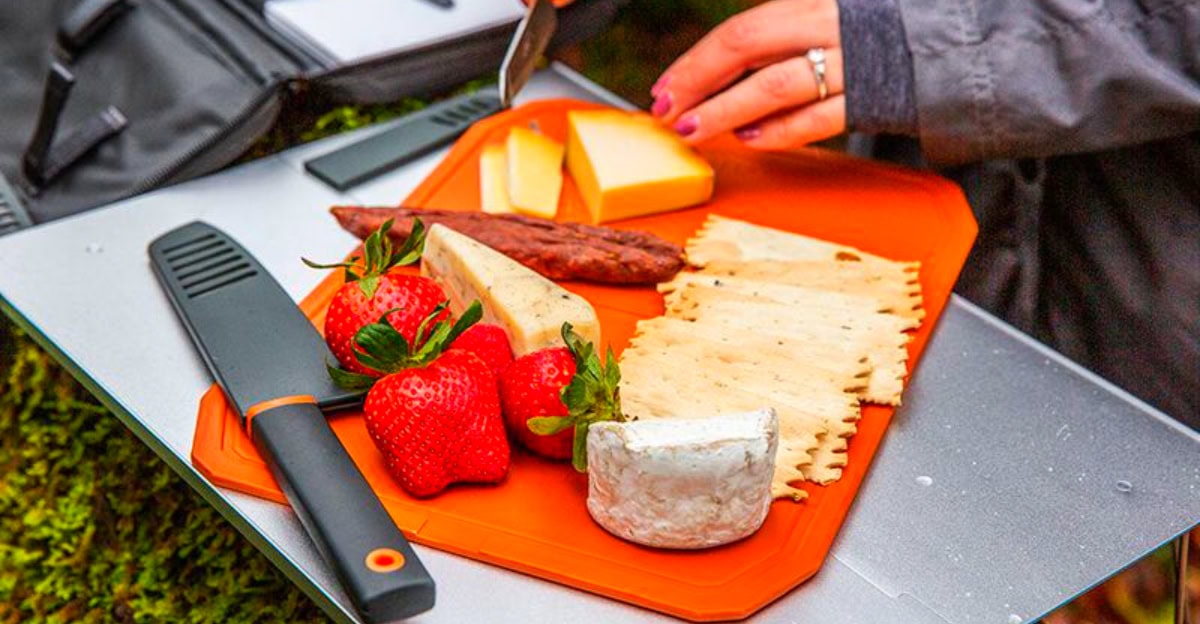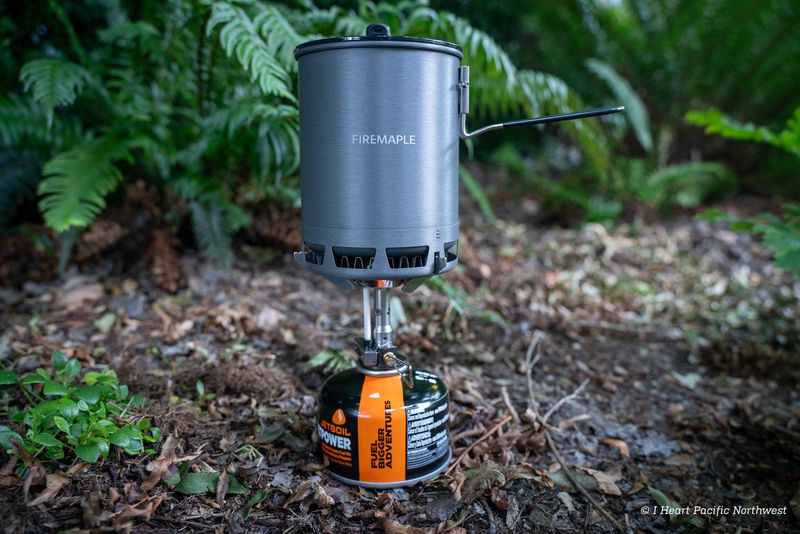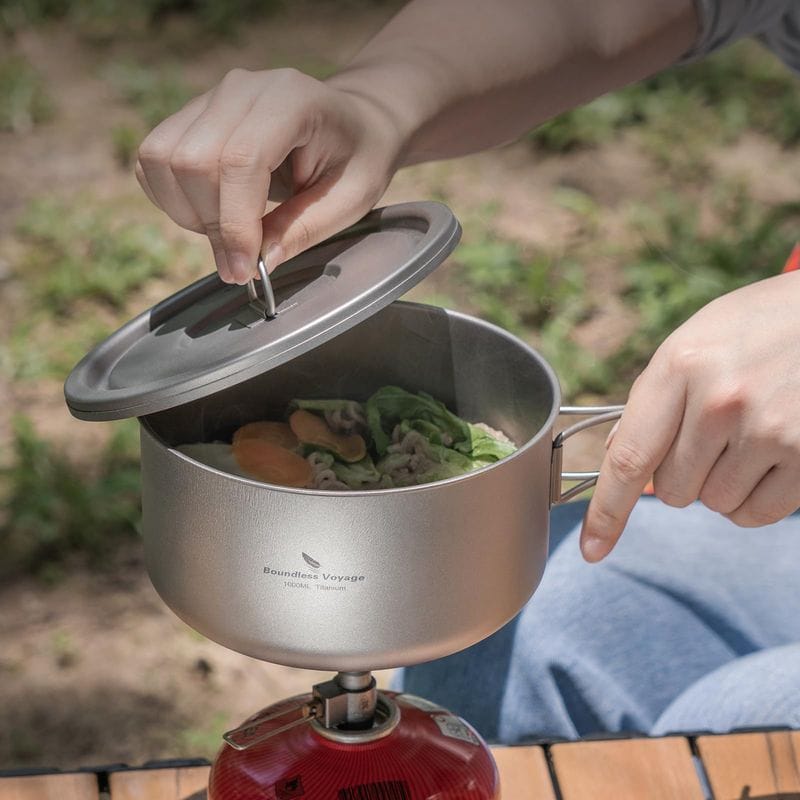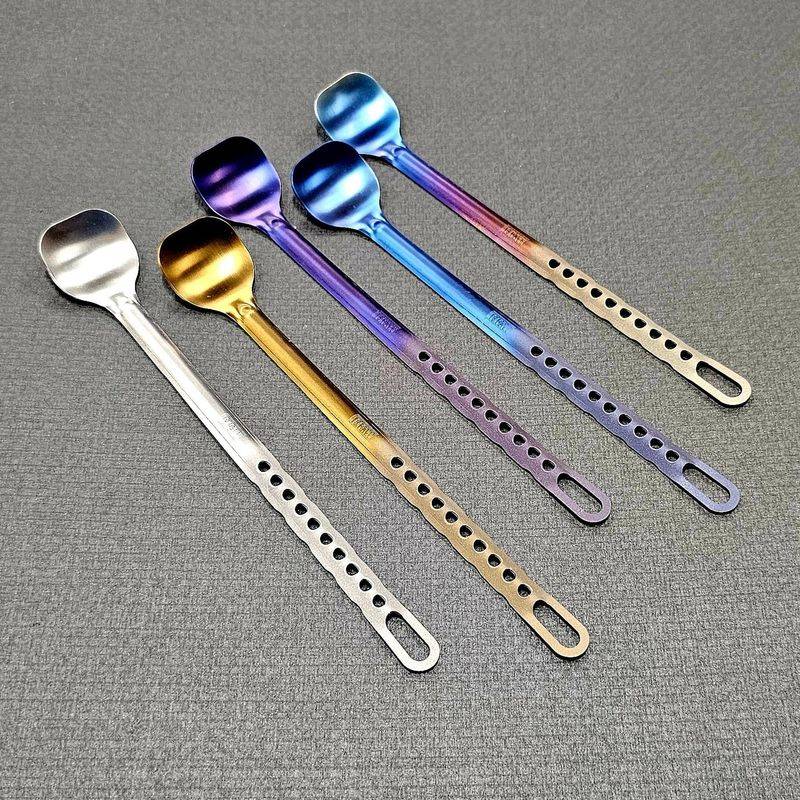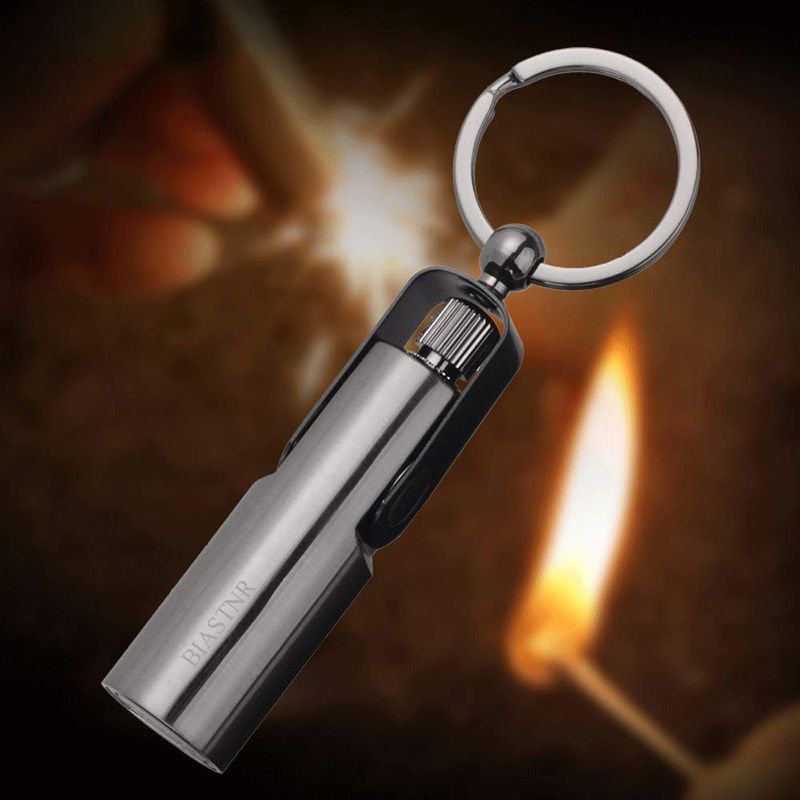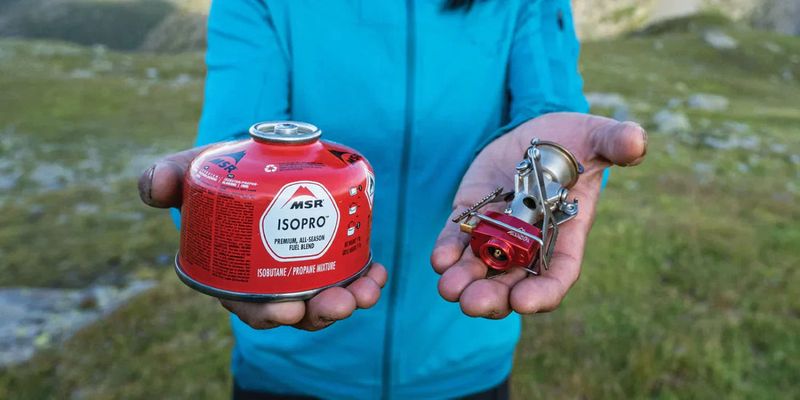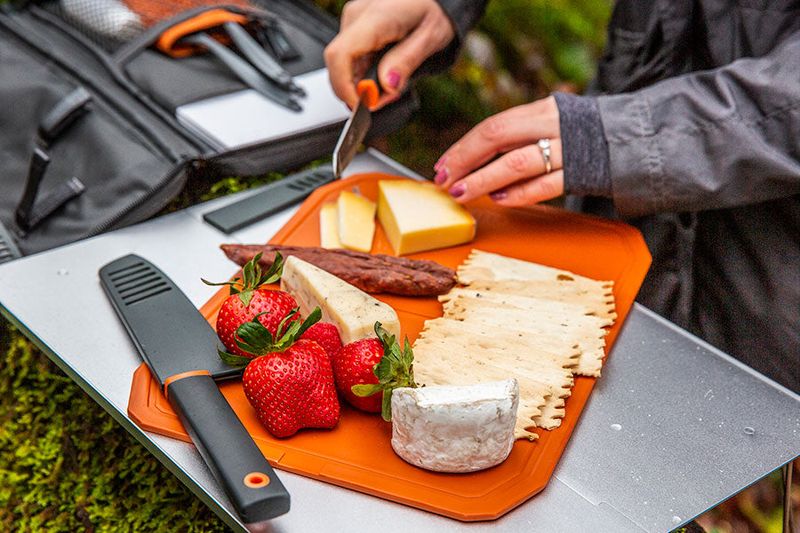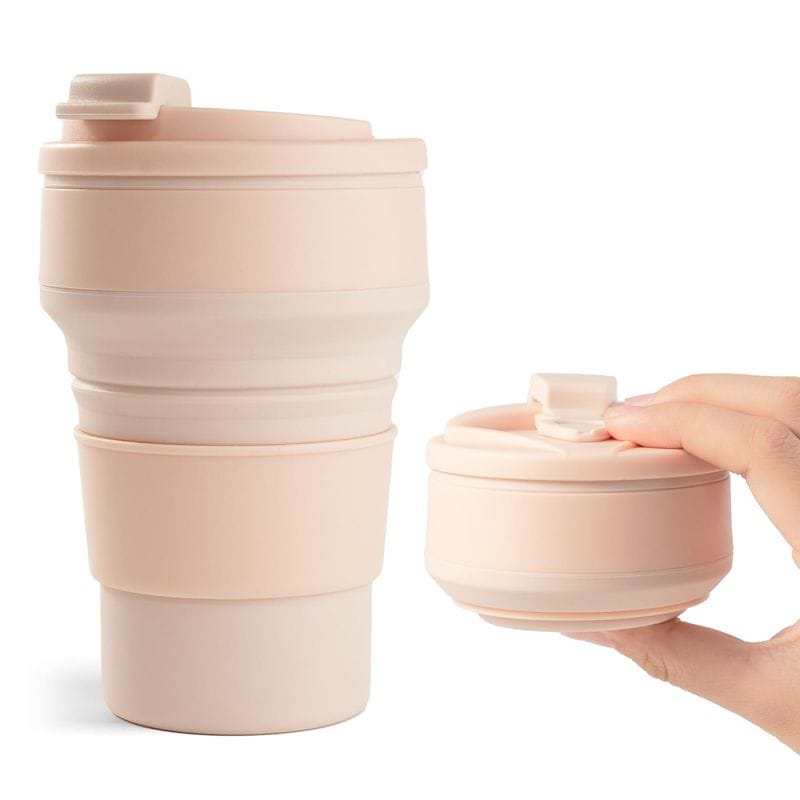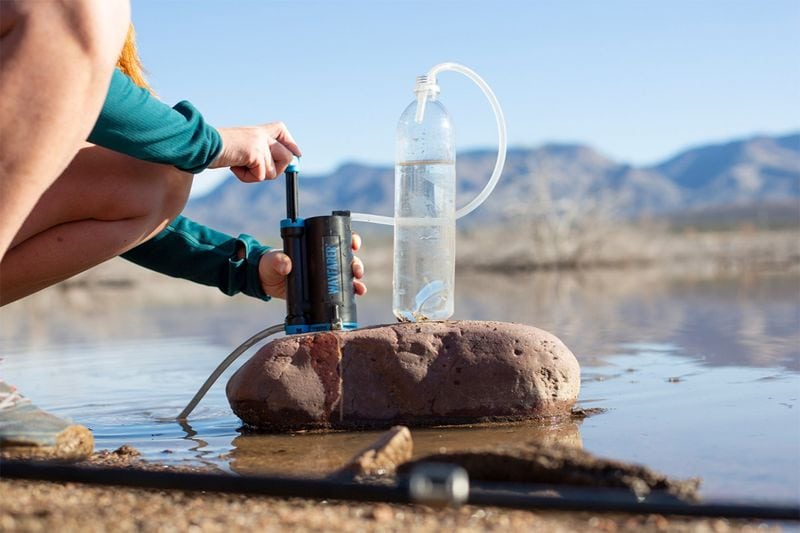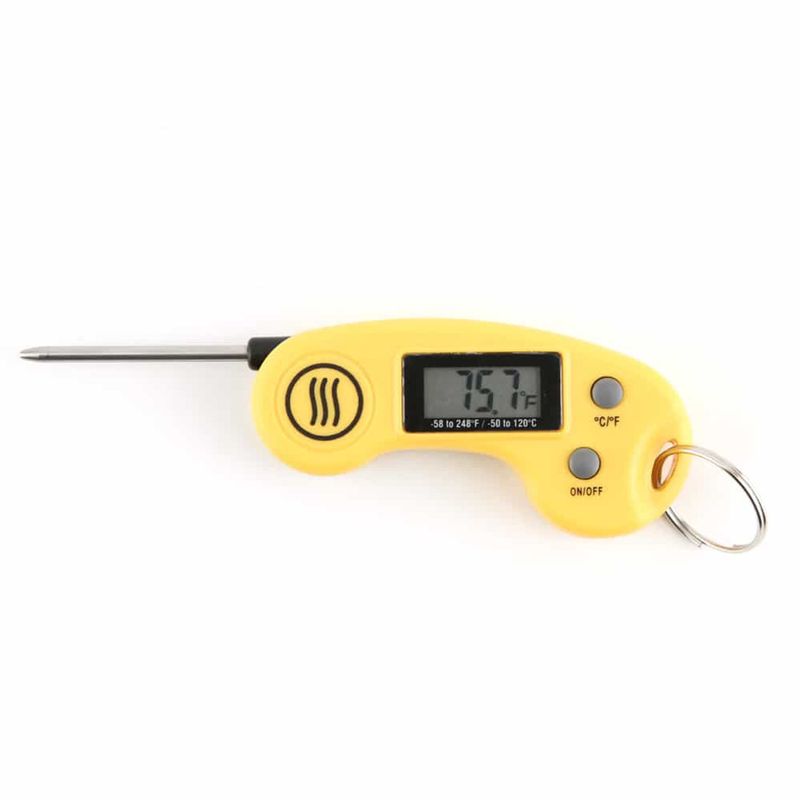Carrying a heavy pack can turn your outdoor adventure into a painful slog. Smart campers know that choosing the right kitchen gear makes all the difference between enjoying your trip and struggling with every step. The secret lies in finding equipment that serves multiple purposes while weighing almost nothing.
1. Compact Canister Stove
Nothing beats the reliability of a good canister stove when you need hot food fast. These lightweight champions connect directly to fuel canisters and deliver consistent heat for boiling water, cooking one-pot meals, or brewing that essential morning coffee.
Look for models with fold-out pot supports and reliable simmer control. Standard threaded canisters work with most quality stoves, making fuel replacement easy.
Always check local fire restrictions before your trip. Many wilderness areas require stoves instead of open fires, making this gear essential for responsible camping while protecting fragile ecosystems.
2. Titanium Pot with Lid
Titanium transforms your cooking game without adding bulk to your pack. A 750-900ml pot handles solo meals perfectly while doubling as your drinking mug and eating bowl, eliminating the need for separate dishes.
This wonder metal heats quickly and weighs almost nothing compared to steel or aluminum alternatives. The tight-fitting lid traps heat efficiently and prevents spills during transport.
Choose pots with foldable handles and graduated volume marks for easy measuring. The smooth interior cleans easily with minimal water, keeping your cleanup routine simple and Leave No Trace compliant in the backcountry.
3. Long-Handled Spoon
Your hands stay cleaner and your meals taste better with a proper long-handled eating utensil. The extended reach lets you stir deep pots without burning your knuckles and makes eating from pouch meals much more civilized.
Titanium spoons offer the best strength-to-weight ratio, though quality stainless steel works well too. A smooth eating surface feels comfortable in your mouth and won’t retain food flavors between meals.
Look for designs with a small hole in the handle for clipping to your gear. Some ultralight hikers prefer sporks, but a dedicated spoon handles liquids and solids more effectively for minimal weight penalty.
4. Mini Lighter Plus Backup
Redundancy saves the day when your primary fire source fails in wet conditions. A mini lighter paired with waterproof matches or a small ferro rod ensures you’ll never face cold meals or lukewarm coffee.
Store your backup ignition source separately from your primary lighter. Tuck one in your first-aid kit or repair pouch where it stays dry and accessible during emergencies.
Choose reliable brands that work at altitude and in cold weather. Test both ignition sources before leaving home, and consider bringing a third backup on longer trips where resupply isn’t possible.
5. Right-Sized Fuel Canister
Planning your fuel needs precisely cuts pack weight faster than buying expensive titanium gear. Calculate your cooking requirements and choose the smallest canister that covers your trip with a small safety margin.
Count planned meals, factor in extra fuel for wind and cold conditions, then match canister size accordingly. Your stove’s specifications show boil times and fuel consumption rates for accurate planning.
Leftover fuel adds dead weight, while running out means cold food and disappointed campers. Track your actual consumption on trips to refine future fuel estimates and achieve the perfect balance between preparedness and efficiency.
6. Compact Cutting Board and Knife
Fresh ingredients make camp meals infinitely more enjoyable than processed alternatives. A palm-sized cutting board paired with a sharp folding knife lets you safely prepare vegetables, cheese, and other real foods without risking finger cuts.
Thin HDPE boards weigh practically nothing while providing a stable cutting surface. They clean easily and won’t dull your knife blade like rocks or logs would.
Choose a small locking or folding knife dedicated solely to food preparation. Keep it sharp for safety and efficiency, and store it securely to prevent accidents while packing and unpacking your gear.
7. Collapsible Mug
Every cubic centimeter counts when packing light, making collapsible vessels incredibly valuable. These ingenious containers handle hot coffee, soup, and desserts while folding nearly flat when empty.
Food-grade silicone models withstand boiling temperatures without imparting flavors or odors to your drinks. A stable base prevents tippy accidents that waste precious hot beverages and potentially damage gear.
Easy-to-clean surfaces save water and time during cleanup. Choose designs with measurement marks for cooking convenience, and ensure the collapsed size fits efficiently in your pack’s organization system without creating awkward bulges or wasted space.
8. Micro Cleanup Kit
Maintaining hygiene without bulk requires smart tool selection. A tiny pot scraper, dropper bottle with biodegradable soap, quick-dry cloth, and small strainer handle all cleaning tasks while weighing almost nothing.
Use soap sparingly and only away from water sources to protect aquatic ecosystems. Strain food scraps from graywater before dispersing it 200 feet from streams and lakes.
Pack towels dry quickly and serve multiple purposes beyond dish cleaning. The complete kit fits in a small stuff sack, keeping everything organized and preventing the soap bottle from leaking onto other gear during transport.
9. Water Treatment System
Safe water forms the foundation of camp cooking and cleanup routines. Contaminated water can end your trip early with serious illness, making reliable treatment absolutely essential for backcountry adventures.
Squeeze filters remove sediment and many pathogens, while chemical treatments like chlorine dioxide tablets inactivate viruses and resistant parasites that filters miss.
Backup tablets weigh almost nothing and provide redundancy when filters clog or break. Always follow manufacturer contact times for chemical treatments, and consider your water sources when choosing between filtration, purification, or combination systems for comprehensive protection.
10. Food Safety Thermometer
Foodborne illness ruins outdoor adventures faster than bad weather or broken gear. A compact thermometer helps ensure proper food temperatures, especially important for car camping where you might cook fresh meat or dairy products.
Keep cold foods at 40°F or below and hot foods above 140°F for safety. Remember the two-hour rule: perishable foods spoil quickly at room temperature, especially in hot weather.
Ultralight backpackers often skip thermometers by choosing shelf-stable ingredients exclusively. However, drive-in campers benefit from temperature monitoring when preparing fresh foods that require specific cooking temperatures for safety and quality.
